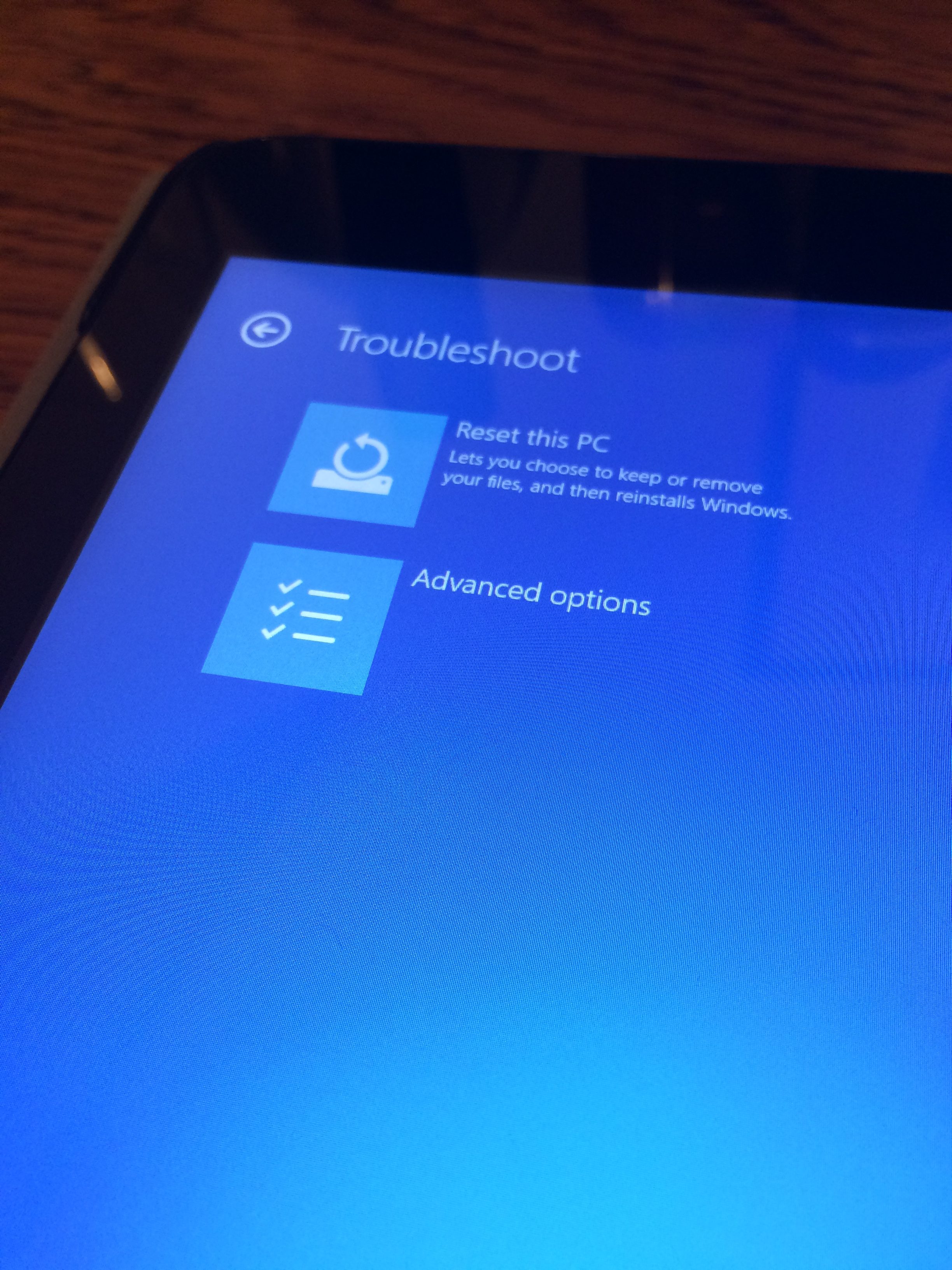I’ve bought an Asus M80TA tablet a year and a half ago because it has a Wacom digitizer integrated into its display and came with a small pressure sensitive stylus. Also, it is a lot faster than my Asus Eee PC 1000H that I bought while I was studying at the university. The tablet has an Intel Atom Z3740 CPU integrated onto its motherboard, which allows it to run a desktop version of Windows. It came with a 32-bit version of Windows 8.1 preinstalled, even though the CPU has a 64-bit architecture, due to the size difference between the two versions.
I often had a problem with its Wacom driver; Windows just kept ‘updating’ it from Windows Update, rendering it unusable. When I lost my patience, I’ve restored the device to its factory state. This is a pretty tricky thing; it’s definitely worth a further reading: Compact OS, image optimization.
So far nothing extraordinary, I had the tablet in the same state it was when I opened its box. I’ve installed the proper Wacom driver, disabled automatic driver update in the OS, and everything worked (most of the time, when the digitizer did not decide to crash its driver randomly).
When Windows 10 came out, I waited for a few months to pass so that I would skip facing a few errors in its early stage. Then I let the Windows 10 Update Assistant do its job. It updated my OS but presented me with some obscure warning about a future restore process. I don’t remember the exact message, but I’m sure it did not mean to foreshadow what happened.
When Windows 10 Anniversary Update came out, first I waited for it to get automatically installed, and well, it happened with the best timing months after the release of Windows 10 Version 1607. I brought the tablet to work so that I could use Skype on it, and the moment I needed to check in on a chat, Windows decided it’s high time to start the 1.5-hour long uninterruptable update process. Nice. The best thing is, the update failed, and I did not receive any details about why it happened.
When I got home, I’ve started investigating a way to manually start the update in an alternative way, and I found a tool on microsoft.com: Windows10Upgrade28084. It generated an all-green report about my system, then started downloading almost 3GB of data. When it finished, it restarted my tablet and did exactly the same thing it did previously. At least I now noticed an undocumented error code on the screen before rebooting the tablet. I’ve tried again, and the tool started the whole process from scratch, downloading everything a second time. When it failed yet again, I’ve read more about this topic and found a way to use the Media Creation Tool to update the currently running OS. It failed with the same error code.
During the investigation, I’ve noticed more and more critical error messages in the event log with mostly unusable descriptions. At this point, I saved my files from the tablet and pressed factory reset on it.
I expected I’d get back Windows 8.1. I also expected to get back the ‘Windows 8.1 just updated into Windows 10’ state. What I did not expect was the Windows bootloader with an error message that the restore failed. And also an error message that it could not boot into Windows.
I’ve tried every tool listed on the menu, but there was no usable System Restore point, and it did not recognise the recovery partition as a backup image either. Booting into the recovery console revealed that the system partition was empty, not counting a corrupted log file and an empty log file inside an otherwise empty Windows directory…

